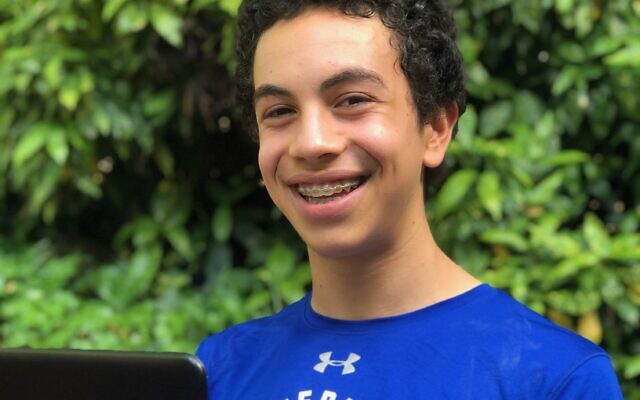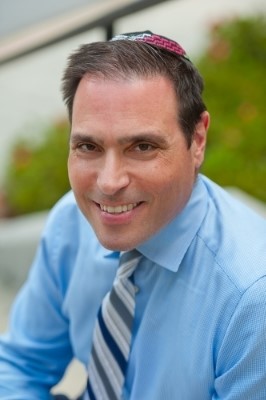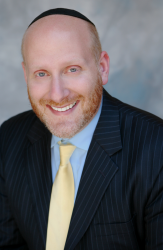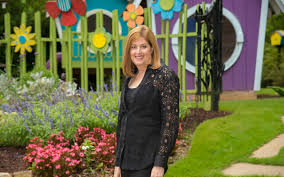Jewish Education Impacted by COVID-19
When schools reopen the doors that closed in mid-March, how they teach and how they operate will ‘require a lot of flexibility on everybody’s part.’
Dave Schechter is a veteran journalist whose career includes writing and producing reports from Israel and elsewhere in the Middle East.

A poster child for how COVID-19 impacted Jewish education may be The Weber School’s annual Passover haggadah assignment.
In mid-March, Weber transformed itself from a traditional bricks-and-mortar school to the virtual world, requiring everyone involved to “innovate, adapt, overcome.”
That included Rabbi Ed Harwitz, head of school at Atlanta’s nondenominational Jewish high school. “During most of my years as a teacher, I have asked students to prepare a commentary on their chosen portion of the haggadah for presentation during their family seder,” Harwitz said.
But this year, “One of our students suggested, ‘Let’s create a virtual haggadah. He had the skills to be our haggadah master,” so the project was extended throughout Weber’s ninth grade, the class of 2023.

That student was Sam Menkowitz, a “digital native,” who took a template available online and wove into the traditional telling of the Passover story the commentaries and design talents of his classmates.
“As a writer, I found it fun to be on the editing side of things for a change, and my technological skills were definitely put to the test in coordinating and building our Haggadah on entirely virtual footing,” Menkowitz said.
Harwitz admitted that, “I was excited and open to it, but as a digital immigrant, my mind doesn’t even go that way.” Now, “This is going to become a Weber tradition,” created as a response to the circumstances.
In a considerable understatement, Harwitz said the school year now coming to an end “has presented a unique set of challenges and complexities.” There was no manual with instructions for what to do if a pandemic forced the closure of schools, sending administrators, teachers, staff, and students home to work in the virtual world.
“If you told me I’d be running an online school, I’d say, I can do that. Give me three years,” said Rabbi Ari Leubitz, head of school at Atlanta Jewish Academy.
AJA, which was formed by the 2014 merger of Greenfield Hebrew Academy and Yeshiva Atlanta, is not only K-12, but also includes an early childhood development program.
Moving forward, the best parts of what have been learned the past three months must be brought back into the brick-and-mortar school world.

“It will never look the same,” Leubitz said. “There are things that we’ve been plunged into, that we had to experiment with and test, that probably wouldn’t have happened otherwise; opportunities that present themselves, that we’re going to harness going forward.”
Harwitz concurred, saying, “We fail to do so at our peril.”
Asked what has surprised or pleased him the most, Harwitz pointed to Weber’s 260 students and 65 faculty and staff. “I’m never surprised by the creativity, the commitment, and the resilience of the students at Weber and the incredible hard work and focus of our faculty. I’ve never failed to be appreciative of the dedication of our parents to their children, but also for all the stakeholders, for our faculty and staff and our school in general,” he said.
Leubitz expressed similar sentiment about AJA’s 435 students and 110 staff, “our teachers’ resilience, our teachers’ flexibility, our parents’ understanding,” he said. “We have turned the world upside down and in every aspect of life, and school is no different. . . . The teachers have been phenomenal. The parents have truly been understanding and supportive.”

Likewise from Amy Shafron, head of school at The Davis Academy, which is K-8 with 475 students and 85 faculty. “I’m exhilarated not only by the professionalism of our teachers, but by the resiliency of our hard-working students and the flexibility and deep commitment of their parents, not only to their children, but to the Davis community as a whole,” she said.
On short notice, curriculum built for a classroom of students had to be adapted to meet the needs of students whose homes became classrooms.
One notable contrast was that of students who welcomed their sudden independent status and those who missed the structure that comes within the school’s walls.
“Like things in life, everyone responds to it in certain ways. There are students for whom schooling didn’t work so great for them and they’re thriving in the virtual environment. There are some kids who do very well in school who are struggling in the virtual environment,” said Leubitz, who came to AJA in 2016.
The challenge was similar for The Davis Academy. “With virtual office hours, whole class Zooms, small group instruction, and even one-on-one lessons, we differentiated the instruction to meet the individual needs of each student, recognizing that just like ‘when we are together,’ some students need more independent enrichment, some thrive with project-based learning, and others enjoy learning collaboratively,” said Shafron, who has been at Davis for 16 years, including nearly 10 as head of school.
There were occasions, such as the haggadah assignment at Weber, when students became teachers and teachers became students. “I was surprised, but it shouldn’t have surprised me,” Harwitz said. “This was precisely the level of fluency beyond comfort that teenagers have with the virtual world, in the ways that they don’t recognize because they’ve grown up with it and in it,” said Harwitz, who came to Weber six years ago. “I teach them Talmud. They teach me Zoom.”
That same need to “innovate, adapt, overcome” will be necessary as administrators plan for a fall semester. Just as there was no manual when the virus forced schools to close their doors, there is no handbook for how to handle reopening those same doors.
“We are going to open our school in the fall,” Leubitz said, “But people have to understand, and I think this is true for synagogues and schools. Everything is going to look a little different. It’s going to require a lot of flexibility on everybody’s part.”
There are the yet-to-be-calculated costs of running what Leubitz termed a “COVID compliant school,” which involve everything from classroom size and teaching staff to buses, cafeterias, athletics and enhanced health and safety criteria.
And as for students, Menkowitz told the AJT: “I am newly challenged now with learning and planning on shifting terrain. As a freshman in high school, of course I miss my friends. It has been further off-balancing as everything was uprooted shortly after I began to get into the swing of things. All the more to look forward to next year or whenever we return to school.”



comments